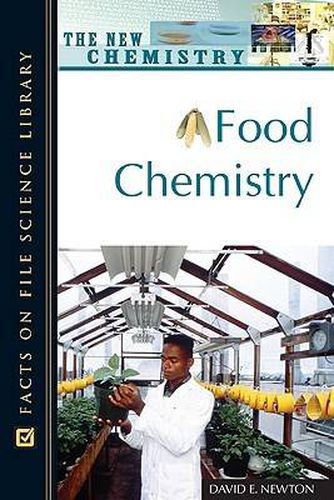Readings Newsletter
Become a Readings Member to make your shopping experience even easier.
Sign in or sign up for free!
You’re not far away from qualifying for FREE standard shipping within Australia
You’ve qualified for FREE standard shipping within Australia
The cart is loading…






Finding new, safe ways to consume food has become complicated as people become more health conscious about the foods they put into their bodies.
Food Chemistry
offers a wealth of information on the field of altering foods for human consumption. After an introduction outlining methods of food preservation and enhancement throughout the years (improved taste, odor, color, and nutritional content), this volume describes the differences between synthetic, engineered, irradiated, and organic foods.New foods created synthetically, such as sugar and fat substitutes, as well as genetically engineered foods and irradiated foods, have scientific and social issues attached to their development, drawing much controversy from the public. On the other end of the spectrum, general interest in consuming natural or organic foods has become more popular. This illustrated volume explores the values and harms of consuming these different types of foods, and also outlines the questions surrounding organic versus non-organic foods, including the replacement of natural vitamins and minerals with synthetically produced substitutes. Biographical information on the people involved in this field of chemistry is also included. This is an informative reference for students who want to learn more about the types of food they consume, how they are produced, and how they affect the human body.
$9.00 standard shipping within Australia
FREE standard shipping within Australia for orders over $100.00
Express & International shipping calculated at checkout
Finding new, safe ways to consume food has become complicated as people become more health conscious about the foods they put into their bodies.
Food Chemistry
offers a wealth of information on the field of altering foods for human consumption. After an introduction outlining methods of food preservation and enhancement throughout the years (improved taste, odor, color, and nutritional content), this volume describes the differences between synthetic, engineered, irradiated, and organic foods.New foods created synthetically, such as sugar and fat substitutes, as well as genetically engineered foods and irradiated foods, have scientific and social issues attached to their development, drawing much controversy from the public. On the other end of the spectrum, general interest in consuming natural or organic foods has become more popular. This illustrated volume explores the values and harms of consuming these different types of foods, and also outlines the questions surrounding organic versus non-organic foods, including the replacement of natural vitamins and minerals with synthetically produced substitutes. Biographical information on the people involved in this field of chemistry is also included. This is an informative reference for students who want to learn more about the types of food they consume, how they are produced, and how they affect the human body.